System Sensor 2WTR-B Handleiding
System Sensor
Rookmelder
2WTR-B
Bekijk gratis de handleiding van System Sensor 2WTR-B (4 pagina’s), behorend tot de categorie Rookmelder. Deze gids werd als nuttig beoordeeld door 73 mensen en kreeg gemiddeld 4.9 sterren uit 37 reviews. Heb je een vraag over System Sensor 2WTR-B of wil je andere gebruikers van dit product iets vragen? Stel een vraag
Pagina 1/4

3825 Ohio Avenue, St. Charles, Illinois 60174
1-800-SENSOR2, FAX: 630-377-6495
www.systemsensor.com
INSTALLATION AND MAINTENANCE INSTRUCTIONS
Photoelectric Smoke Detector
2-Wire: 2WTR-B (Form C Relay), 2WTA-B (Sounder)
4-Wire: 4WTR-B (Form C Relay), 4WTA-B (Sounder)
4WTAR-B (Form C Relay, Sounder), 4WITAR-B (Isolated Thermal, Form C Relay, Sounder)
Series
BEFORE INSTALLING
Please read thoroughly System Sensor’s Applications Guide for System Smoke
Detectors (SPAG91), which provides detailed information on detector spacing,
placement, zoning, wiring, and special applications. This is available online
from System Sensor’s web site: www.systemsensor.com.
NOTICE: This manual shall be left with the owner/user of this equipment.
IMPORTANT: This detector must be tested and maintained regularly follow-
ing National Fire Protection Association (NFPA) 72 National Fire Alarm Code
requirements. At a minimum, cleaning should be performed annually.
GENERAL DESCRIPTION
Models 2WTR-B and 2WTA-B are 2-wire photoelectric smoke detectors; models
4WTR-B, 4WTA-B, 4WTAR-B, and 4WITAR-B are 4-wire photoelectric smoke
detectors. All models incorporate a state-of-the-art optical sensing chamber
and an advanced microprocessor. The microprocessor allows the detector to
automatically adjust its sensitivity back to the factory setting when it becomes
more sensitive due to contaminants settling in its chamber. In order for this
feature to work properly, the chamber must never be opened while power is
applied to the smoke detector. This includes cleaning, maintenance or screen
replacement. All models also feature a restorable, built-in, fixed temperature
(135°F) thermal detector and are also capable of sensing a freeze condition if
the temperature is below 41°F.
Models 2WTA-B, 4WTA-B, 4WTAR-B, and 4WITAR-B contain a piezoelectric
horn which generates the ANSI S3.41 temporal pattern in an alarm condition.
All detectors on a zone will sound when the power supply to them is reversed.
The RRS-MOD can be used for the power supply reversal function. The RRS-
MOD also enables all the detectors’ sounders on a zone to be synchronized
and allows the zone to be silenced from the panel by entering the alarm si-
lence key at the keypad.
The detector that initiated the alarm condition will have its red LED and Form
C relays (if applicable) latched until reset by panel.
The model 4WITAR-B photoelectronic smoke sensor is isolated from the fixed-
temperature heat sensor, providing a self-resetting, local audible smoke alarm
that does not alarm at the panel. Only the fixed-temperature heat sensor will
cause the 4WITAR-B to initiate an alarm at the panel and the relay to change
its state.
NOTE: In order for all i3 sounder detectors on a loop to sound when the panel
alarms, the supply voltage polarity must be reversed. A reversing relay, System
Sensor model number RRS-MOD, must be used. The RRS-MOD is designed
to allow all i3 Series detectors in the same loop to sound when one of the
detectors goes into alarm. In addition, the RRS-MOD will synchronize all of
the i3 Series sounder smoke detectors on the loop. Some panels may require
the use of programmable outputs. Refer to System Sensor literature for further
information on the RRS-MOD.
All i3 Series detectors are designed to provide open area protection. Two-wire models
must be used with compatible UL Listed panels only.
ELECTRICAL SPECIFICATIONS
2-wire 4-wire
System Voltage –Nominal: 12/24 12/24 V
(Non-polarized for 2WTR-B and 4WTR-B)
Min.: 8.5 10 V
Max.: 35 35 V
Max. Ripple Voltage: 30 30 % peak to peak of applied voltage
Avg. Standby Current: 50 50 µA average
Peak Standby Current: 100 — µA
Max. Alarm Current
4WTA-B, 4WTR-B: — 35 mA
4WTAR-B, 4WITAR-B: — 50 mA
2WTR-B: 130 — mA panel must limit current
2WTA-B: 130*
Alarm Contact Ratings: — 0.5 A @ 30 V AC/DC
Form C Contact Ratings: 2 2 A @ 30 V AC/DC
Audible Signal
(temp-3 tone): 85 85 dBA min. in alarm or supply polarity reversed (Sounder units only)
Remote Annunciator Output: 7 — mA maximum
EOL Relay: — 12/24 EOLR-1
Reset Time (min): 0.3 0.3 seconds
Max. Start-up Capacitance: 0.1 — µF
Max. Initial Start-up Time: 45 15 seconds
AlarmVerification** Start-up Time: 15 15 seconds
* Direct Power (Non-reverse Polarity): 130 mA limited by panel.
Reverse Polarity Power: 30 mA for the 2WTA-B in alarm; 12 mA for all other 2WTA-B units on the loop. Add 25 mA for the RRS-MOD reversing relay alarm current.
** Assumes the panel’s alarm verification reset time is 10 seconds or less. Should the alarm verification reset exceed 10 seconds, use the maximum initial start-up time.
PHYSICAL SPECIFICATIONS
Heat Sensor: 135°F (57.2°C)
Freeze Trouble: 41°F (5°C)
Operating Temperature Range: 32 to 100°F (0 to 37.8°C)
Operating Humidity Range: 0 to 95% RH non-condensing
Storage Temperature Range: –4 to 158°F (–20 to 70°C)
Diameter (including base): 5.3 inches
Height (including base): 2.0 inches
Weight: 7.1 oz.
I56-2170-010
1 I56-2170-010
02-20

When used with an “i3 Ready” control panel or the i
3 Series 2W-MOD2 mod-
ule (refer to installation manual), the 2WTR-B and 2WTA-B are capable of
generating a “maintenance needed” signal. The 2W-MOD2 can indicate a need
for cleaning, replacement, or a freeze trouble at the control panel or module.
WARNING
The 2W-MOD2 has replaced the previous model number 2W-MOD. To ensure
proper remote maintenance signaling capabilities, do not use the 2W-MOD
with i3 model numbers 2WTR-B and 2WTA-B.
Installation of the 2WTR-B, 2WTA-B, 4WTR-B, 4WTA-B, 4WTAR-B, and
4WITAR-B detectors is simplified by the use of a mounting base that may
be pre-wired to the system, allowing the detector to be easily installed or re-
moved. The mounting base installation is further simplified by the incorpora-
tion of features compatible with drywall fasteners.
Two LEDs on the detector provide a local visual indication of the detector’s status:
TABLE 1: DETECTOR LED MODES
Green LED Red LED
Power-up Blink 10 sec Blink 10 sec
Normal (standby) Blink 5 sec —
Out of sensitivity Blink 5 sec—
Freeze Trouble Blink 10 sec—
Alarm — Solid
During an initial power-up delay, the red and green LEDs will blink synchro-
nously once every ten seconds. It will take approximately 80 seconds for the
detector to finish the power-up cycle (see Table 2).
TABLE 2: POWER-UP SEQUENCE FOR LED STATUS INDICATION*
Condition Duration
Initial LED Status Indication 80 seconds
Initial LED Status Indication
(if excessive electrical noise is present)
4 minutes
*Refer to Electrical Specifications for start-up time in conjunction with panel
alarm verification.
NOTE: If, during power-up, the detector determines there is excessive electri-
cal noise in the system such as those caused by improper grounding of the
system or the conduit, both LEDs will blink for up to 4 minutes before display-
ing detector status (see Table 2).
After power-up has completed and the detector is functioning normally within
its listed sensitivity range, the green LED blinks once every five seconds. If the
detector is in need of maintenance because its sensitivity has shifted outside
the listed limits, the red LED blinks once every five seconds. When the detec-
tor is in the alarm mode, the red LED latches on. The LED indication must not
be used in lieu of the tests specified under Testing. In a freeze trouble condi-
tion, the red LED will blink once every 10 seconds (refer to Table 1).
To measure the detector’s sensitivity, the i3 Series Model SENS-RDR Infrared
Sensitivity Reader tool (see Figure 4) should be used. Refer to instructions
manual D100-98-00 for the proper use of the SENS-RDR.
Models 2WTR-B and 2WTA-B also include an output that allows an optional
Model RA400Z/RA100Z Remote Annunciator to be connected.
MOUNTING
General spacing guidelines are 30˝×30 , with each detector covering 900 ft˝ 2
under maximum conditions.
Consult NFPA 72, the local Authority Having Jurisdiction (AHJ), and/or ap-
plicable codes for specific information regarding the spacing and placement
of smoke detectors.
Each i3 Series detector is supplied with a mounting base that can be ceiling- or
wall-mounted:
1. To a single gang box, or
2. To a 31⁄2-inch or 4-inch octagonal box, or
3. To a 4-inch square box with a plaster ring, or
4. Direct mount or to ceiling using drywall fasteners.
FIGURE 1: MOUNTING OF DETECTOR
S0121-00
The i3 Series heads and bases are keyed so that all heads will only fit into
their respective bases. One model 4-wire relay base will accept the 4WTR-B,
4WTAR-B and 4WITAR-B detector heads and no others. The 2WTR-B, 2WTA-B
and 4WTA-B will only fit into their respective mounting bases and no others.
The heads and bases are clearly identified as either 2-wire or 4-wire. When
mounting the i3 Series, ensure that the head is mounted to the correct base,
and the test switch is aligned with the tamper release tab.
TAMPER-RESISTANT FEATURE
The i3 Series detectors include a tamper-resistant feature that prevents re-
moval from the mounting base without the use of a tool. To engage the tam-
per-resistant feature, cut the small plastic tab located on the mounting base
(Figure 2), and then install the detector. To remove the detector from the base
once it has been made tamper resistant, use a small screwdriver to depress the
square tamper release tab, located on the skirt of the mounting base, and turn
the detector counterclockwise.
INSTALLATION GUIDELINES
The i3 Series detectors represent an advancement over the previous sounder
and Form C relay models and are designed to be used with the 2W-MOD2 and
RRS-MOD only. Do not mix detector models on a zone.
FIGURE 2: TAMPER-RESISTANT FEATURE
SNA OFF TAB FORP
TAMPER LOCK
TAMPER RELEASE BTA
DIRECT MOUN HOLEST
S0109-00
WIRING INSTALLATION GUIDELINES
All wiring must be installed in compliance with the NFPA 70, National Electri-
cal Code, applicable state and local codes, and any special requirements of the
local Authority Having Jurisdiction.
Proper wire gauges should be used. The conductors used to connect smoke
detectors to the alarm control panel and accessory devices should be color-
coded to reduce the likelihood of wiring errors. Improper connections can
prevent a system from responding properly in the event of a fire.
The screw terminals in the mounting base will accept 14–22 gauge wire. For
best system performance, all wiring should be installed in separate grounded
conduit; do not mix fire alarm system wiring in the same conduit as any other
electrical wiring. Twisted pair may be used to provide additional protection
against extraneous electrical interference.
Wire connections are made by stripping approximately 1⁄4-inch of insulation
from the end of the feed wire, inserting it into the proper base terminal, and
tightening the screw to secure the wire in place. Do not put wires more than 2
gauge apart under the same clamping plate.
TWO-WIRE COMPATIBILITY
System Sensor two-wire smoke detectors are marked with a compatibility
identifier located on the label on the back of the product. For two-wire mod-
els 2WTR-B and 2WTA-B, connect detectors only to compatible alarm control
panels as identified by System Sensor’s two-wire compatibility chart, available
at www.systemsensor.com.
NOTE: Models 2WTR-B and 2WTA-B are not to be installed on initiating cir-
cuits containing other makes/models of smoke detectors.
NOTE: Style D initiating circuits require the use of a 2W-MOD2 for models
2WTR-B and 2WTA-B.
2 I56-2170-010
02-20

WIRING DIAGRAMS
FIGURE 3A: WIRING DIAGRAM, 2WTR-B AND 2WTA-B
2-WIRE
ZONE
2-WIRE
CONTROL
PANEL
+
–
(5) RA –
(4) RA +
(3) – IN/OUT
(2) + OUT
(1) + IN
RA400Z
EOL
RESISTOR
OPTIONAL
RELEASING
DEVICE
(6) NC
(7) C
(8) NO
NOT INCLUDED ON
2WTA-B MODEL
S0122-00
NOTE: FOR ALL COMPATIBLE ADEMCO PANELS, DO NOT EXCEED 30 OHMS
LINE IMPEDANCE.
NOTE: ONLY ONE 2WTR-B DETECTOR PER ZONE CAN BE USED.
NOTE: Only one 2WTA-B detector shall be installed on a zone, unless the
panel switches the zone to a reverse polarity, non-current limited power sup-
ply. For panels that do not provide this feature, a reversing relay, System Sen-
sor model RRS-MOD, may be used. When utilized with the 2WTA-B, it allows
for more than one detector to be utilized on a loop. Some panels may require
the use of programmable outputs. Refer to System Sensor literature for further
information on the RRS-MOD. The 2WTA-B detector shall not be mixed with
other 2-wire detectors on the same zone.
CAUTION
Any 2-wire i3 smoke detector (2W-B, 2WT-B, 2WTA-B, or 2WTR-B) wired
in the Style D initiating device circuit (IDC) configuration requires the use
of a 2W-MOD2 module. This is because fire alarm control panels vary by
manufacturer on the implementation of Style D circuits. Therefore, the only
way to insure proper operation of 2-wire i
3 smoke detectors (2W-B, 2WT-B,
2WTA-B, or 2WTR-B) on Style D IDC’s is to use a 2W-MOD2 module. Refer to
the 2W-MOD2 installation manual, document D500-46-00, for Style D wiring
diagrams. The 2W-MOD2 installation manual may be downloaded from the
System Sensor web site at www.systemsensor.com.
FIGURE 3B: WIRING DIAGRAM, 4WTR-B, 4WTA-B, 4WTAR-B, AND
4WITAR-B
AUX OR
SMOKE
POWER
IDC
4-WIRE
CONTROL
PANEL
+
+
–
–
(5) A
(4) A
(3) – IN/OUT
(2) + OUT
(1) + IN
EOL
RELAY
( EOLR-1)
EOL
RESISTOR
(5) A
(4) A
(3) – IN/OUT
(2) + OUT
(1) + IN
NOT INCLUDED ON
4WTA-B MODEL
NOT INCLUDED ON
4WTA-B MODEL
OPTIONAL
RELEASING
DEVICE
(6) NC
(7) C
(8) NO
OPTIONAL
RELEASING
DEVICE
(6) NC
(7) C
(8) NO
S0123-01
INSTALLATION
WARNING
Remove power from alarm control unit or initiating device circuits before in-
stalling detectors.
NOTE: To install units so that corresponding LEDs are lined up, refer to the
“Green LED” indicator on the base.
1. Wire the mounting base screw terminals per Figure 3a or Figure 3b, as
applicable.
2. Place detector on the base and rotate clockwise. The detector will drop
into the base and lock into place with a “click”.
3. After all detectors have been installed, apply power to the alarm control unit.
4. Test each detector as described in Testing.
5. Reset all the detectors at the alarm control unit.
6. Notify the proper authorities that the system is in operation.
CAUTION
Dust covers are an effective way to limit the entry of dust into the smoke
detector sensing chamber during construction. However, they may not com-
pletely prevent airborne dust particles from entering the detector. Therefore,
System Sensor recommends the removal of detectors before beginning con-
struction or other dust producing activity. When returning the system to ser-
vice, be sure to remove the dust covers from any detectors that were left in
place during construction.
CAUTION
Smoke detectors are not to be used with detector guards unless the combina-
tion has been evaluated and found suitable for that purpose.
CAUTION
When using the RRS-MOD with model 2WTA-B, do not mix the 2WTA-B with
other model smoke detectors and dry contact closure devices, including me-
chanical heat detectors, manual pull stations and waterflow switches. Such
mixing can cause a direct short on the auxiliary power terminals, damaging
the control panel’s internal circuitry and/or damage devices connected to the
initiating device circuit.
TESTING
Detectors must be tested after installation and following maintenance.
NOTE: Before testing, notify the proper authorities that maintenance is being
performed and the system will be temporarily out of service. Disable the zone
or system undergoing maintenance to prevent any unwanted alarms.
Ensure proper wiring and power is applied. After power up, allow 80 seconds
for the detector to stabilize before testing.
Test i3 Series detectors as follows:
A. TEST SWITCH
1. An opening for the recessed test switch is located on the detector hous-
ing (See Figure 4).
2. Insert a small screwdriver or allen wrench (0.18˝ max.) into the test
switch opening; push and hold.
3. If the detector is within the listed sensitivity limits, the detector’s red
LED should light within one second.
FIGURE 4: RECESSED TEST SWITCH OPENING AND SENS-RDR POSITION
POSITION SENS-RDR AN ANGLE ON AT
THE AL AREA OR THE CHAMBER OV AT
OPENING BY THE WORD “PAINT”
PUSH RECESSED
SWITCH WITH A
0.18 MAX. ≤
DIAMETER TOOL
RECESSED
TEST SWITCH
LED
S0110-00
B. SMOKE ENTRY TEST
Canned aerosol simulated smoke (canned smoke agent) may be used for smoke entry
testing of the smoke detector. Tested and approved aerosol smoke products are:
MANUFACTURER MODEL
Home Safeguard Industries 25S, 30S
SDi CHEK02 and CHEK06
SDi SOLOA4
SDi SMOKESABRE-01
When used properly, the canned smoke agent will cause the smoke detector to go
into alarm. Refer to the manufacturer’s published instructions for proper use of the
canned smoke agent.
3 I56-2170-010
02-20
Product specificaties
| Merk: | System Sensor |
| Categorie: | Rookmelder |
| Model: | 2WTR-B |
| Kleur van het product: | Wit |
| Gewicht: | 200 g |
| Hoogte: | 51 mm |
| Stroombron: | AC/DC |
| LED-indicatoren: | Ja |
| Ondersteuning voor plaatsing: | Horizontaal |
| Connectiviteitstechnologie: | Bedraad |
| Montagewijze: | Opbouwmontage |
| Diameter: | 127 mm |
| Aantal: | 1 |
| Beste gebruik: | Kantoor |
| Detector type: | Foto-electrische reflectie detector |
| Koppelbaar: | Ja |
| Gemakkelijk te installeren: | Ja |
| Bedrijfstemperatuur (T-T): | 0 - 37.8 °C |
| Relatieve vochtigheid in bedrijf (V-V): | 0 - 95 procent |
Heb je hulp nodig?
Als je hulp nodig hebt met System Sensor 2WTR-B stel dan hieronder een vraag en andere gebruikers zullen je antwoorden
Handleiding Rookmelder System Sensor

9 Juni 2023

4 Juni 2023

30 Mei 2023

30 Mei 2023

28 Mei 2023

22 Mei 2023

18 Mei 2023

16 Mei 2023

13 Mei 2023
Handleiding Rookmelder
- Gira
- Jung
- Steren
- Siemens
- EQ3
- Chacon
- Pyrexx
- First Alert
- Somfy
- Vivanco
- Netatmo
- Satel
- SAVS
- Drayton
- Jemay
Nieuwste handleidingen voor Rookmelder
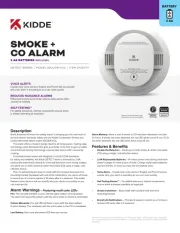
5 September 2025
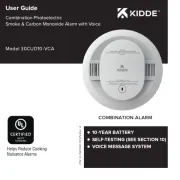
4 September 2025
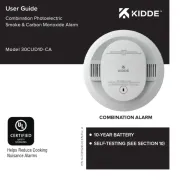
4 September 2025
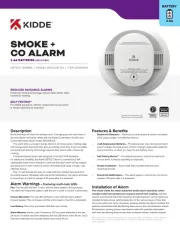
4 September 2025
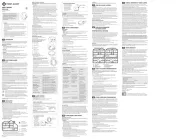
2 September 2025
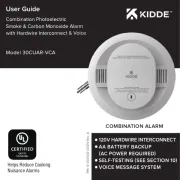
2 September 2025
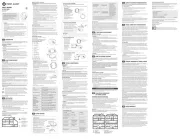
1 September 2025
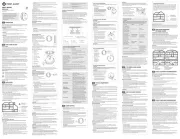
1 September 2025

26 Augustus 2025

11 Augustus 2025